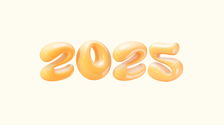What’s so special about French wines?
In two words: excellence and diversity.
France produces 7 to 8 billion bottles of wine per year. That's the equivalent of 20% of the world’s production of wine. Many grape varieties now planted throughout the world (Cabernet Sauvignon, Sauvignon Blanc, Chardonnay, Pinot Noir) originally came from France.
Wine is a part of French culture where buying a bottle is a ceremony and tasting is an art. Every single wine has a unique character to explore along the criteria of grape variety, soil, planting, yields and wine-making. Since the culture of wine is based on knowledge, as well as on rituals, French natives often get to know their national wines from other people, like the elderly, who take pleasure in introducing new generations to this national art of drinking wine. I personally have been introduced by my aunt and grandfather. On my birthday, they offer me one or two bottles of a vintage year from our region, the Loire Valley.
We do care a lot about the origin of a wine. France has a certification called the AOC (Appellation d'Origine Contrôlée) that curiously guarantees not a wine’s quality, but its origin. There are no less than 293 original appellations in France, ranging from the huge Bordeaux and the Champagne, to the small, single-vineyard appellations of Domaine de la Cornasse in Burgundy or La Coulée Serrant in the Loire Valley. Every appellation has a style of its own.
French Wine-tasting Rituals
Here’s how to do it like the French:
Glassware
- Use a glass properly shaped for wine tasting – thin brim, transparent and large enough to let the flavor exhale.
- Slowly pour the wine in a decanter before drinking. By doing so, you separate it from its sediment, and you enable it to mix with oxygen, which helps the flavor develop.
Wine-tasting cellar
When you want to buy several bottles of wine, it is a tradition to directly visit the vineyard, and taste the owner's wines in the cellar. There is a special atmosphere in the wine-tasting cellar: fresh and quiet, big stones and a friendly good fellow winemaker to take you through his collection of liquid treasures.
Professionals will offer for you to spit out the wine so you don’t spoil the taste of the next wine you try. This is a professional custom that you should accept seriously.

A view of the river Loire in the village of Chaumont-sur-Loire.
Image by Emmanuel Debouzy [Public domain]
Wine-producing regions & the most remarkable appellations
Bordeaux is by far the largest wine-producing region. Great bottles from “Château this” or “Château that,” have made the appellation famous, but this wine brand is so huge that you will find good wines for bargain prices. Bordeaux wines are easy to accommodate with food. They are fruity, not overly-alcoholic and well-balanced – always a safe bet. On the other hand, you may want to explore a different wine region, the kind that can surprise you, that can disappoint everyone one year and give a wonderful vintage the year after.
You will find these kinds of wines in the Loire Valley. The Loire appellation is a mix of many wine styles.
- My favorite red is the Anjou-Village Brissac with its deep blackberry and liquorice flavors and its feminine layer of tannin, great for red meat and roasted pork.
- Château de Chinon and Saint-Nicolas de Bourgueil are praised as well among the reds, and have both yielded remarkable vintages during the past hundred years.
- Among the whites, the Sauvignon Blanc of Sancerre is a model for the worldwide Sauvignon Blanc. Whites from the Loire Valley are light and delicate, ideal to drink with chicken, fish and seafood, as well as with goat cheese.
- Loire also has the best Vins de Table (affordable wines that families drink for everyday lunch), including the Coteaux du Layon (my grandpa's favorite) and Vins rosés. I recommend the Rosé d'un Jour, Domaine de la Sansonnière by Mark Angéli: definitely my favorite Rosé(so fruity and sweet, with a surprising taste of pomegranate), considered by some as feminine, to be served very fresh with a fruit tart.
- Mark Angéli's vintage has also something special in that it belongs to the new generation of organic wines. Loire is a leader in the field of organic agriculture. Organic is not a guarantee of a good taste; it’s a guarantee of respect for the environment and consumer health. Pesticides, preservatives, even sulfites are prohibited for the most authentic vineyards. Give them a try!
The Loire valley certainly produces the most puzzling and precious wines you can find. As a wine amateur, they are my challenge, my field of exploration, and my final choice. The wines themselves are like the Loire region: subtle, wild, suffused with morning fog and evening sunlight; so strong and feminine. You can say you know about wines when you know about the Loire wines. It’s a constant tasting adventure.
For more information, read Decode the Wines of the Loire Valley, an excellent article from the source Winemag.com.
Another big region is Bourgogne (Burgundy). Bourgogne produces expensive wines, especially whites. They have a distinctive mineral taste and freshness that I have appreciated only a few times in my life. It has been a long time, so I will choose a Bourgogne white to drink with the goose at Christmas; a good idea, don’t you think?
For dessert, Alsace wines are a safe bet. Gewurztraminer, Riesling and Pinot Gris (names of the grape varieties) rank at the top of the list. They are distinctively syrupy and fruity, and should be served with caution with the main dish; they can be a wonderful combination, but you should ask for the advice of an expert.
Rhône Valley and Languedoc Roussillon are the hot, sun-bathed vineyards from the south. They produce wines with a high alcohol level, deep and great reds and sweet whites.
And, of course, you all know about Champagne, the sparkling king of whites grown in the Champagne region of France. Royal, inimitable (cannot be copied or imitated), it is our favorite guest at every party.

Wine regions in France
Image by Eric Gaba [CC-BY-SA-2.5]
How to become a winemaker in France.
You may have thought about buying a vineyard and making and selling your own wine. You can buy a property and a vineyard (most often, the two come together) and start a new business. The range of prices is huge, from 8,000€/ha for a Muscadet plant near Nantes, to 1,100,000€/ha for a vineyard of Champagne.
If you plan to invest, you need help from professionals of vineyard transactions. You will have to deal with two challenges: making good wine, and then selling it!

Alsace wine bottles are distinctively long and slim.
Image by Michal Osmenda from Brussels, Belgium (2007 Gewurztraminer "Hugel") [CC-BY-SA-2.0]
Hero Image by jenny downing (CC-BY-2.0)
Resources:
DÉCOUVREZ LES VINS DE FRANCE (in English)
LABIVIN (une Sommeliere) (in French)
Article edited by italki teacher Ilene Springer







